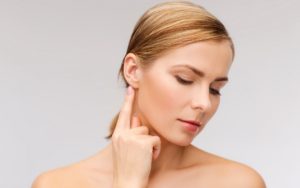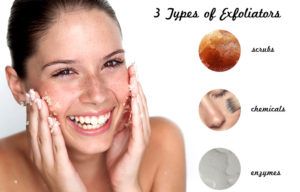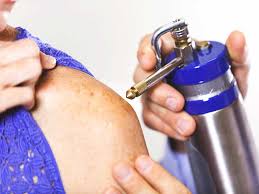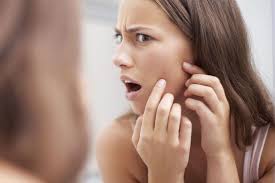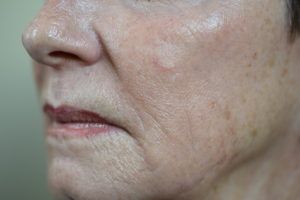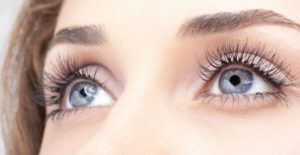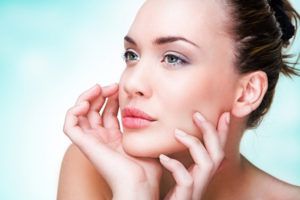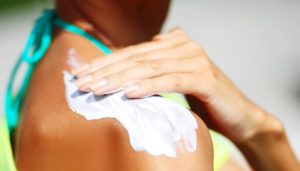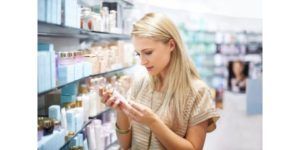Blog
Earlobe Rejuvenation
Our skin is composed of layers that hold specialized fibers called elastin and collagen. These proteins work to keep our skin healthy and vibrant by allowing for stretching and the retention of moisture. When collagen and elastin naturally begin to dissipate over time, the effect is that our skin starts to dry out, sag, thin and wrinkle. Without sufficient collagen and elastin, the skin is unable to maintain proper elasticity and , in effect, our skin looks older and less healthy. This occurs on our earlobes in the form of elongation, wrinkling, drooping, drying and thinning – the problem is amplified for women who wear earrings(particularly heavy ones).
Earlobe rejuvenation ( sometime referred to as an earlobe lift) is designed to help with this very problem. The process involves a cosmetic treatment that takes the necessary steps to repair the damaged skin of the earlobe, fix elongation, and improve texture. Typically, injectable fillers are used. Products like hyaluronic acid based dermal fillers can be injected into the earlobe in order to smooth the area’s skin, plump tissue and lift the lobes for a more youthful appearance. Earlobe rejuvenation treatment using injectable fillers also helps to make an earring hole smaller , if it has become stretched with time, and repair excessively large piercings.
By: Eric Rosenberger MD
5 Ways to treat Sun Damage after the Summer!
Outdoor summer fun often results in sun damage, even in those people who are careful about sun block, and the damage becomes more noticeable as summer color fades. Here are 5 ways to treat sun damage after the summer:
RETINOIDS:
Retinoids or Retin-A, can help reduce pore size, lighten dark spots, and increase turnover of new skin cells.
CHEMICAL EXFOLIATION:
Creams or gels with alpha-hydroxy acid applied to the face daily, gently remove dead skin cells. This acid, is known to offer an accelerated rate of skin cell turnover, which helps rid you of the damaged skin and leaves behind a fresh layer of healthy skin.
ANTIOXIDANTS:
Sun damages skin cells and breaks down collagen. Antioxidants help protect the skin cells from further damage and reduces the breakdown of collagen.
SKIN LIGHTENING AGENTS:
Skin lightening creams often contain hydroquinone and other agents, which have been shown to be clinically effective for lightening dark spots.
CHEMICAL PEELS:
Chemical peels can be applied to the skin to offer rapid skin cell turnover. Healing time varies, depending on the depth of the peel. The new skin has a brighter and more even appearance.
By: Eric Rosenberger MD
Exfoliation tips for the best skin ever!
Done correctly, exfoliation helps your skin purge dead cells, revealing a better complexion underneath. Exfoliation happens primarily in the outer layer of your skin, the stratum corneum. The dead skin cells there should shed in a process called desquamation, but it is slowed by a number of factors: hormone fluctuations, sun exposure, vitamin deficiencies and aging. Exfoliation, either mechanical or chemical, accelerates the shedding process, and when done right, reveals healthy skin cells. Chemical exfoliations use fruit enzymes, or acids like glycolic acid, derived from sugar, and lactic acid, which is made from milk. Mechanical exfoliations use beads, brushes and razors (dermaplaning) to lift dead cells of the skin. Chemical exfoliations gently break the bonds that hold dead skin cells together, so they can be easily rinsed away. But for skin with a history of irritation or allergy from cleansers and lotions, mechanical is the way to go.
By: Eric Rosenberger MD
What is Cryotherapy for warts/liver spots/lesions?
Warts/lesions sometimes go away on their own, but it can take years. If you do not want to wait, you may want to freeze them off. Doctors call this process cryotherapy. It is one of the most common ways to get rid of warts/lesions. It may also lower the chances that the warts will spread to other body parts. Most doctors use liquid nitrogen, which can reach temps as low as -321 to freeze off the warts/lesions. The doctor will use either a cotton swab or a spray “cryogun” to apply liquid nitrogen to the wart/lesion and some of the skin around it. This may feel like an ice cube touching your skin, but it only lasts a few seconds. Your skin may feel numb briefly and may also hurt, turn red, then form a blister. Once you leave the doctors office, you should be able to return to your normal routine, including showering and bathing. The area usually should not get infected but watch for signs of it, like redness or swelling. Eventually, a scab will form where the liquid nitrogen was applied. The scab will fall off about a week later. Try not to pick at it before its ready to fall off.
By: Eric Rosenberger MD
Teens and Acne
If there is one thing you can count on as a teen, its ACNE! More than 85% of teenagers have this common skin problem, which is marked by clogged pores(whiteheads, blackheads), painful pimples, and sometimes hard,deep lumps on the face, neck, shoulders, chest, back, and upper arms. The prime culprits of acne, are heredity and hormones. At puberty, the sebaceous or oil glands around the hair follicle on the skin enlarge. Oil production also increases, then the ducts, surrounding the follicles become clogged, and a whitehead or blackhead appears. Acne can continue for years, but typically, vanishes when a person reaches his or her early 20’s. Determining which type of acne lesions a teen has, is the first step in directing treatment. Your Dr. may prescribe one or more of these: Antibiotics(help to kill bacteria and reduce inflammation, Birth Control pills and other medicine that works on hormones( can be helpful for women), and Isotretinoin ( the only treatment that works on all that causes acne). Usually, the first choice for treating acne is tetracycline, such as minocycline or doxycycline. Oral antibiotics are best used with topical retinoids and benzoyl peroxide.
By: Eric Rosenberger MD
Rejuvenate Your Skin with a Chemical Peel
A chemical peel is a cosmetic procedure that involves applying a chemical solution to your skin. The solution removes dead cells and the top layer(s) of damaged or blemished skin, revealing the fresh new skin beneath. There are three basic types of chemical peels, each suited for correcting concerns in the different layers of your skin:
- Light or Superficial Peel
- Medium chemical peel such as Retin A or Jessner Peel
- Deep Chemical Peel
Not only can a chemical peel help you achieve gorgeous, radiant skin, but it also induces exfoliation, tightens the skin and stimulates collagen.
By: Eric Rosenberger MD
What is Fraxel Laser Resurfacing Treatment
This non-invasive skincare treatment is clinically shown to help restore damaged skin and diminish the signs of aging, leaving skin looking youthful, radiant, and healthy. The fraxel laser minimizes the appearance of acne scars, treats sun damaged skin, age spots and melasma, it reduces the appearance of fine lines and wrinkles, it helps clear uneven skin tone, tightens lower eyelids, creates smoother, softer skin, builds collagen and is FDA approved to treat the face, neck, chest and hands. Fraxel laser resurfacing diminishes the signs of aging and rejuvenates skin by channeling state of the art fractional laser technology.
By: Eric Rosenberger MD
Lip Lines: The best treatment options for wrinkles around your mouth.
We have all heard of crow’s feet and frown lines, but what exactly are lip lines? Lip lines,sometimes called lipstick lines or smokers lines, are the small wrinkles that form just above your upper lip. The three main causes of wrinkles above and around your lips are smoking, sun exposure, and old age. Smoking wreaks havoc on the human face and causes premature aging lines and spots to appear everywhere. Too much sun exposure, without sun protection, will also cause wrinkles and creases to appear on the skin, especially in those people with fair skin. In many cases, wrinkled lips are simply a result of genetics. Additionally, as you age, you lose volume in your lips, further exacerbating the wrinkles that occur through movement. Fortunately, , there are many treatments available that can reduce or eliminate wrinkles around your lips. Quitting smoking and taking care to apply sunscreen will help your lips be as smooth as possible. Good hydration and nutrition will also keep your lips healthy and pretty. Dermal fillers are used to restore volume and fullness to the skin/lips, giving a healthy, youthful appearance. Juvederm and Restylane fillers are designed to fill in the lines and wrinkles as well.
By: Eric Rosenberger MD
What is Dermaplaning?
Dermaplaning is a method of exfoliation that consists of using a 10 gauge scalpel to gently scrape off the top layer of dead skin cells in order to reveal a smoother, brighter complexion. It eliminates the annoying peach fuzz that cakes up in makeup. Dermaplaning also allows for greater penetration of skincare products and creates a flawless canvas for makeup to glide on smoothly. In fact, medical aestheticians often use dermaplaning to help prepare the skin for more intrusive procedures like chemical peels and laser treatments.
By: Eric Rosenberger MD
Crepey Skin & Lines under the Eyes
As your body gets older, your skin starts to reveal signs of aging. Eye skin is very thin, so wrinkles, fine lines, and crepiness are most noticeable. Both skin type and genetics can determine whether a person gets crepey skin and it is more common on older people, not usually appearing until people are at least in their 40’s. However, the most common cause of crepey skin is from ultraviolet (UV) radiation. The American Association of Dermatology says that exposure to UV radiation is the most preventable cause of early skin damage. Overtime, the UV radiation will break down the elastin fibers in the skin, which allow the skin to stretch and return to its normal position. When skin turns crepey, eyelids look loose and saggy. Both Botox and the fraxel laser will give a nice cosmetic result. Also, fillers may need to be injected under the tear trough area as well.
By: Tammy Luedke
What does the Jessner Peel do?
A Jessner peel is a medium depth chemical peel that is done by a licensed aesthetician or a dermatologist/doctor. It is one of the most effective peels to remove superficial layers of the skin. A Jessner peel combines lactic acid, salicylic acid, and resorcinol to exfoliate the skin and penetrate deeper into the skins layers. It is extremely safe and excellent to combine with TCA. The Jessner is used to treat photoaging, age spots, acne, postinflammatory hyperpigmentation, melasma, and freckles. Jessner peels should not be used on pregnant women or people who are allergic to any of its components.
By: Tammy Luedke
Eliminate Age or Sun Spots
When exposed to the sun, the cells that house melanin are released and the skin darkens. This results in dark spots, which are also known as liver spots, lentigos, age spots and sun spots. IPL stands for Intense Pulsed Light, also known as photorejuvenation or the photofacial. The IPL can be fantastic for erasing mild sun damage, freckles, irregular pigmentation and light brown spots on the face, neck and chest. Retinols and hydroquinone products will help fade the sunspots also.
By: Tammy Luedke
Finding Relief from Sinus and Allergy Symptoms
Living in Austin and the surrounding Hill Country provides warm sun and natural beauty most of the year. However, Central Texas is also fraught with allergies. This means itchy, watery eyes, frequent sneezing, nasal obstruction, and potentially, sinus infections. For some, this is just a nuisance, but for others, this can lead to decreased quality of life. Here is a basic guide for allergy home remedies, when to obtain allergy testing, and when to seek surgical consultation.
“The Solution to Pollution is Dilution!”
Airborne pollen, like Mountain Cedar, Ragweed, Johnson grass, and Oak as well as mold spores, like Alternaria, are very small particles by design. Pollen allows the parent plant (or mold) to rapidly disperse large volumes of genetic material over a large geographic area. Nasal hygiene with saline sinus rinses (Tip #1) can help wash these particles from your nasal passages. Several companies offer isotonic saline kits over the counter. I recommend distilled, warmed (microwave), isotonic salt water (not hot!) twice per day. Follow this with topical therapy for maximal benefit.
Topical and Oral Therapies
Topical solutions of antihistamines (for eyes or nose) are currently only available via prescription. However, many oral (tablet) forms are available over-the-counter (OTC) and effective in stopping the histamine release that causes the itching and “leaky faucet” nasal drip. Try 24-hr formulations of cetirizine (Zyrtec) or fexofenadine (Allegra) for once daily dosing.
When taken daily, topical corticosteroids, like fluticasone and budesonide (OTC), provide long term benefit to prevent inflammation of the nasal mucosa. These drugs provide relief from the nasal congestion caused by allergic rhinitis.
I recommend a combination of sinus rinses, oral antihistamine, and topical nasal steroid (Tip #2) daily for at least a month before taking the next step.
Medical Examination and Testing
When the above therapies fail, it is time to consider identifying the cause or causes of your symptoms. Obtaining a nasal exam will identify causes of anatomic obstruction, like a crooked septum, turbinate hypertrophy, or nasal polyps. Allergy testing will help identify the exact pollens, molds, or other particles causing your symptoms. For some patients, environmental irritants, like smoke and weather changes, rather than allergens, are to blame.
Consult a Board Certified Allergist or Ear, Nose, and Throat (ENT) specialist for assistance (Tip #3).
Medical and Surgical Management
If home and topical therapies fail, significant anatomic nasal obstruction is identified on exam, or multiple severe reactions are identified on allergy testing, combination surgical and long term medical therapy is generally recommended. Current immunotherapy options include allergy drops (liquid allergen introduced orally) or allergy shots (allergens placed subcutaneously). Surgical treatments focus on improving nasal airflow, removal of obstructing tissue (turbinate hypertrophy), and improved sinus drainage.
More questions for Dr. Rosenberger? Email: info@facialfocussurgery.com
By: Dr. Rosenberger
Youthful Eyes: Best Practices & Treatments
Youthful Eyes: Best Practices and Treatments
Your eyes are the window to not only your soul, but your age as well. Studies have shown that when strangers are asked to judge how old a person is, the eye area is one of the biggest influences. To help your eyes look brighter and more youthful, follow some of these suggestions.
Conceal Dark Circles
Dark circles have an aging effect on eyes. Using a concealer that’s yellow or peach based and slightly lighter than your skin can correct discoloration, illuminate, and make eyes appear bigger. Dusting sheer, loose, yellow-toned powder locks the concealer in place for the day. If you have a few extra seconds, a couple of squeezes of an eyelash curler opens eyes even more and prevents lashes from casting a shadow.
Fill in Your Brows
Don’t over pluck your brows. It will make you look like you’re losing your hair a classic sign of aging. When brows are too think, they make your features disappear, adding years to your face. If yours are growing sparse, try filling them in with a brow powder or for more permanent solution look into microblading.
Gently Remove Eye Makeup
No matter how tired you are or how much waterproof eyeliner you have on, don’t rub your eyes, ever. The skin is so delicate, even rubbing off eye makeup can worsen crow’s-feet over time. Gently press down with a cotton pad soaked in makeup remover for 10 to 15 seconds instead.
Use an Eye Cream
Look for an eye cream that’s hydrating and packed with peptides that help promote collagen and elastin, retinol which helps soften fine lines and wrinkles (but should only be used at night), and contains vitamin K to help reduce dark circles.
Soften Fine Lines and Crow’s Feet
Fraxel laser resurfacing treatments under the eyes combined with dermal filler can greatly rejuvenate the eyes by firming and plumping the delicate skin. Small amounts of Botox or Dysport, a neurotoxin, can help relax the muscles and help make the eyes look fuller, soften crow’s feet and even pop up the brow and give you more of an arch.
Protect Yourself
Being outside, even for a few minutes, exposes your skin to a war zone of skin-ravaging free radicals. Since you can’t live inside a bubble, protecting yourself during the day with an antioxidant like vitamin C is the best at preventing skin-cell damage. Follow up with an SPF of 30 or above and preferably one which contains non-irritating ingredients such as zinc oxide or titanium dioxide (EltaMD) to avoid any skin reactions. Another layer of defense is wearing wide UV-protective sunglasses which keeps you from squinting – one of the many causes of crow’s-feet.
By: Tammy Luedke
The Best Skin Rejuvenating Treatments To Get This Fall
The Best Skin Rejuvenating Treatments To Get This Fall
As the cold weather starts to roll in and the powerful sun rays start to fade away, consider turning this time into a beauty advantage. The absence of Texas’s powerful sun and inflammatory heat during the cooler winter months makes it the ideal time to book cosmetic treatments that would normally require you to hide out of the sun. Whether it’s scheduling your dreaded laser hair removal session or finally getting rid of those red facial veins you’re tired of covering up, these treatments are better endured now rather than waiting until later. Here’s a few treatments we recommend you do now.
- Laser Hair Removal
The technology in laser hair removal is largely based on skin tone, so having an even, tan free surface to work with means better, safer results. The laser targets pigment, therefore having the least amount of melanin makes the treatment easier, safer, and most effective. The laser beams highly concentrated light into the hair follicle. The pigment in the follicle absorbs the light, destroying the hair. Most patients have permanent hair loss after a series of 6-8 sessions.
- Chemical Peels
A chemical peel is a procedure that accelerates skin turnover and speeds pigment reduction, resulting in healthier skin and a more uniform complexion. It is a quick way to remove dead skin cells, fine lines, small scars, freckles, dark spots and/or skin imperfections. Your skin is left with an enhanced glow and improved radiance. Since chemical peels make skin more sun sensitive by removing superficial layers, the winter is an ideal time to give one a try!
- Micro-Needling
Winter’s cold temperatures and excessive indoor heat can take a toll on your skin, dulling your complexion. Micro-needling can help combat this, reducing the signs of aging, improving the appearance of acne scars and rejuvenating your skin. Micro-needling causes controlled micro-injuries that stimulate your body’s natural wound healing process. The micro-injuries trigger the release of cytokines and growth factors that lead to remodeling of collagen and elastin which help to improve skin firmness, thickness and texture. You’ll be left with tighter, smoother, glowing skin.
- Laser & Light Treatments
The best winter treatments for skin are those which address a variety of concerns including including wrinkles, loss of collagen, discolorations, texture, and redness. Our favorites for all in one winter skin rejuvenation and anti-aging are light and laser treatments like IPL (intense pulsed light) and Fraxel. IPL targets unsightly blemishes, redness, and brown spots while Fraxel targets water to help with fine lines and texture. In either case, now is the time to do both. Results can been seen after a single treatment. However, a series of 3-4 treatments will leave you with more dramatic results.
Not sure which treatments are best for you? Schedule a complimentary consultation with one of our Licensed Aestheticians and they can map out a treatment plan for you!
By: Tammy Luedke
Spring Clean with Hydrafacial MD
Spring is finally here! As the temperatures warm and flowers begin to bloom, we, at Facial Focus Cosmetic Surgery, would like to remind you that there is no better time to say goodbye to your tired winter complexion!
HydraFacial MD is the ultimate multi-tasker! Taking advantage of a multi-step approach, HydraFacial MD simultaneously cleanses, exfoliates, extracts, and nourishes your skin. Fine lines, enlarged pores, discoloration, acne, and dull skin can all be improved. HydraFacial MD leaves your skin feeling healthier and looking visibly brighter.
Cleanse and Peel with Vortex-Exfoliation™
HydraFacial MD’s patented applicator uses a spiral design and multiple abrasive edges to thoroughly cleanse and exfoliate the skin. The first step is much like microdermabrasion, except that HydraFacial MD is applied along with a specially formulated serum which helps open and deep cleanse pores of debris and damaged, dead skin cells that can dull your skin.
To promote an even and consistent level of skin renewal, a gentle chemical peel is applied to further exfoliate your skin. A mixture of Glycolic and Salicylic acids, HydraFacial MD’s Vortex-Peel™ provides you with the results of a chemical peel without the downtime or post peel flaking.
Extract & Hydrate with Vortex-Extraction™
Extractions are often uncomfortable and are the least enjoyed part of a facial. Fortunately, unlike other treatments, HydraFacial MD’s Vortex-Extraction is painless. Instead of manually removing impurities, a light, vacuum-like suction is used to remove debris from deep within the pores.
Fuse and Protect with Vortex-Fusion™
Unique to HydraFacial MD, Vortex-Fusion technology is used to infuse a specially formulated Antiox+ Serum™ that is made up of skin-healthy nutrients including antioxidants, hyaluronic acid, and peptides. This last step promotes hydrates and nourishes the skin to help with long term skin health and beauty by boosting the skin’s collagen and hyaluronic acid stores.
Spring Clean with HydraFacial MD at Facial Focus Cosmetic Surgery
With HydraFacial MD, your skin can look its best this spring. Contact Facial Focus Cosmetic Surgery to schedule your very own HydraFacial MD today!
By: Tammy Luedke
8 Smart Skin Care Habits to Start in Spring
Spring clean your cosmetics
When in doubt, toss it out. There are no FDA regulations for skin-care product expiration dates, but it is important to be diligent about swapping out products regularly (because they do have a shelf life). Go through your cosmetics, products, and sunscreens, and toss the things that have been around a little too long. Remember this rule of thumb: Anything you apply near the lips or eyes should be tossed out after a year. Also, throw your dingy makeup bag in the washer. If it can’t be laundered, clean with antibacterial cleanser or replace it with a new one.
Swap your cleanser
As you bid farewell to cold weather, introduce stronger cleansers into your skin routine. During the winter creamy or hydrating cleansers which leave a residue of fats and lipids on the skin which help repair it, are typically the best. However, in the spring switch to a normal cleanser because the skin is no longer compromised. Keep the three categories of cleansers in mind: creamy, foaming, and normal (non-soap, pH-balanced cleanser). Opt for normal cleanser once the weather warms up, unless your skin is especially oily, in which case a foaming cleanser can help remove extra oils.
Exfoliate more
Just like you clean up your winter wardrobe, clean up your winter skin. Bring back its glow by exfoliating away that dull winter layer that cold winter air and dry indoor heat left behind. In the winter, when your skin is drier and more sensitive, so it’s best to exfoliate every few weeks. In the spring, exfoliation removes old layers of skin. Most skin types can increase exfoliation to once or twice a week. If you notice dryness, redness, or sensitivity, decrease how often you exfoliate or ask your skin care professional which exfoliation method might work best for you.
Trade in cream for lotion
Moisturizer is crucial to any skin-care routine, but using heavy creams in the spring can actually cause annoying breakouts if they aren’t needed. Heavy creams have lipids that stick to the skin and repair that dry winter skin. In the spring, when your skin barrier is healthy, think about switching to a lighter formulation such as a hydrating serum, lotion or hydrating gel.
Go to a pro for a peel
For deeper renewal of the skin, see an aesthetician for a seasonal chemical peel. In this treatment, a chemical solution is applied to the skin, eventually causing the outer layer to peel off. The new layer of skin underneath is typically smoother, fine lines and wrinkles are reduced and brown spots are lightened. Talk to your aesthetician to see what type of peel is best for your skin type.
Be more diligent about sunscreen
Most dermatologists apply sunscreen every morning, all year long. However, if you’re not in the habit, springtime is the best time to start. When spring arrives, we all have cabin fever and spend more time outside than we did in the winter. The most important thing is to make sure you use sunscreen, even if it’s cloudy. Apply every morning, and reapply every two hours. If you get wet, apply every hour. Using makeup that has SPF protection may not be enough. A broad-spectrum sunscreen with an SPF of 30 or higher is what you want to use daily. If you’re taking a spring break vacation, make sure you lather up with sunscreen when you’re on the beach or even if you’re just sitting next to a window—say, in a car during a road trip.
Go shopping
A fun way to protect your skin: Hit the mall. Try to find some nice, fun hats and get in the habit of wearing one every time you go outside. Look for a wide-brimmed hat, which protects the face and scalp from sun damage better than, say, a baseball cap. If you know you’ll be exercising outside and sweating, look for fun, fashionable, UV-protected clothing. Sun protection on clothing is measured by UPF (Ultraviolet Protection Factor)—the higher, the better. A fabric with UPF of 50 will allow only 1/50, or 2 percent, of the sun’s UV rays to pass through. To compare, a white T-shirt has an average UPF of 7.
Stay ahead of allergies
Suddenly have puffy bags under your eyes? You didn’t age overnight. When people have allergies to pollen or any other environmental allergen, it can create redness and inflammation underneath the eye. When that happens, it makes under-eye bags larger and wrinkles around the eye more pronounced. If you’re prone to allergies, your doctor may recommend preventative practices. Taking an antihistamine, for example, could help avoid flare-ups and reduce some side effects. Also, talk to your skin care professional about eye creams that can help reduce dark circles and puffiness or an antioxidant serum that may help reduce inflammation and calm redness.
By: Tammy Luedke
Upper Eyelid Rejuvenation with Blepharoplasty
We blink 15-20 times per minute while awake. This amounts to around 20,000 blinks per day and tens of millions of blinks over a lifetime! Constant repetition and gravity gradually cause sagging of the upper eyelid skin and redundancy. This generally causes a “tired” appearance and some people will have a reduced visual field of view because of this eyelid skin “hooding.” The good news is that upper blepharoplasty is an affordable procedure that can be performed under local anesthesia in an office setting. Most adults require only conservative removal of excess skin and slight tightening of the orbicularis oculi muscle at the location of the upper eyelid crease to correct the problem.
Who is qualified to perform the procedure? Many surgical specialties are trained in upper blepharoplasty. Seek consultation from a Facial Plastic, Oculoplastic, or Plastic Surgeon for reliable results.
Will insurance cover it? Severe dermatochalasis causing visual field (vision) obstruction is often covered by insurance. An ophthalmologist can assess your visual field and tell you for sure.
Have questions? Give us a call at 512-717-9475 or send us an email at info@facialfocussurgery.com
By: Dr. Rosenberger
What is the Fire and Ice Facial?
iS Clinical Fire & Ice Facial
The Fire and Ice Facial is also known as the Innovative facial and Red Carpet Facial. This intensive facial bridges the gap between mild spa facials and chemical peels, providing immediate results without down-time. It is no surprise this clinical facial has become popular among Hollywood A-listers like Gwyneth Paltrow and Halle Berry.
Awakening your senses, this phenomenal treatment incorporates both active and soothing formulas, which display aromas of warm cinnamon and spice as well as cool peppermint. The centerpiece of this remarkable treatment system is a combination of two therapeutic masques. The Resurfacing and Rejuvenating masques are followed by a unique combinations of serums and creams.
This intensive clinical treatment is designed to rapidly and safely resurface the skin, diminishing the appearance of fine lines and wrinkles while smoothing, softening, encouraging overall skin rejuvenation. Excellent for all skin types and ages, this facial results in a complexion that is dramatically refined, with no downtime, peeling, or other negative side effects.
FIRE
The rich warming Intensive Resurfacing Masque is designed to rapidly and safely exfoliate the skin, thereby reducing fine lines, smoothing, softening, promoting circulation and encouraging skin cell turnover. This professional treatment mask contains several powerful ingredients including: Glycolic Acid (18%), Lactic Acid, Citric Acid, Malic Acid, Retinol, Niacinamide (Vitamin B3), and potent antioxidants including Green Tea Extracts. This resurfacing treatment works to combat acne and aging skin, as it provides gentle exfoliation when you can’t afford the time of a chemical peel.
ICE
The briskly cooling Rejuvenating Masque is a soothing, hydrating treatment formulated with Hyaluronic Acid, Aloe Vera, Green Tea Extracts, Licorice, Grape Seed Extract and Rosemary Extract. This mask leaves your skin feeling incredibly hydrated and soothed.
This is an excellent treatment for compromised skin. But can also be used on most skin types,if you’re interested in learning more or scheduling a Fire & Ice Facial give our office a call!
By: Tammy Luedke
Microdermabrasion vs HydraFacial – What’s the Difference?
Microdermabrasion vs HydraFacial – What’s the Difference?
We’ve all heard of Microdermabrasion -there are people who love microdermabrasion and how it provides exfoliation. However, there is now another skincare treatment that might catch your attention even more called HydraFacial. This treatment offers the skin much more than just exfoliation. This treatment combines extraction, cleansing, and exfoliation, all while infusing hydration and antioxidants into the skin.
HydraFacial can be completely customized for each individual, because everyone has different skin and skin needs. Let’s take a look at the difference in between microdermabrasion and HydraFacial.
Microdermabrasion
When you are looking for microdermabrasion, you’ll find there are a variety of types. But one thing that they all have in common is they exfoliate your skin. The procedure will remove your skin’s top layer and make it smoother and softer immediately. It also removes the debris from your skin, cleanses your pores, encourages the formation of collagen to tone and firm your skin,and stimulate the flow of blood. Microdermabrasion can also be incredibly beneficial before a chemical peel to create a deeper peel.
HydraFacial
HydraFacial- also known as an advanced microdermabrasion resurfaces your skin. It does everything that microdermabrasion does while including special customizable serums which are full of peptides, hyaluronic acid and antioxidants. HydraFacial is also able to be customized based on your type of skin and the concerns that you have.
Before your treatment is done, your medical aesthetician or skin care specialist is going to do a thorough analysis of your skin to figure out which additions you may want, which includes therapy with red light for skin repair and sun damage or therapy with blue light for acne. It’s also possible to include a peal if you want extra exfoliation or, if you want to promote collagen and elastin production, growth factors.
You’ll discover your skin’s feeling totally rejuvenated following your HydraFacial and that it’s glowing. You’re going to notice that the products you’re using on your skin penetrate faster and are working more effectively. Your makeup is also going to go on a lot more smoothly without going into pores or fine lines.
HydraFacial is a great treatment right before a huge event, also, but it’s best if you do a series of treatments since they’re cumulative. You’re going to see the improvement in wrinkles, fine lines, skin tone, overall health of your skin, texture, and acne.
No matter which treatment you decide is best for you your skin will still be getting a great exfoliation. If you’re unsure which treatment is best for you consult your local Medical Aesthetician or skin care specialist.
By: Tammy Luedke
The Skinny on Sunscreen
The Skinny on Sunscreen
You’ve got the perfect outfit on, makeup done, and a hair just right – you’re ready for the day! But hold on! Did you remember your sunscreen?
During the year, the importance of sunscreen cannot be understated, as it helps keep ultraviolet rays – UVA and UVB – from damaging the skin. UVB is responsible for sunburn, while UVA has more long-term damaging effects, like wrinkling, sun damage and premature aging.
Have you ever wondered what the SPF number on your sunscreen bottle means, it stands for Sun Protection Factor. These SPF ratings start at 2 and can reach as high as 70. They measure a sunscreen’s effect against UVB rays and the amount of time you can be in the sun before burning. If, for example, you burn after ten minutes of sun exposure without any cream, an SPF of 15 will allow you to stay in the sun for up to 150 minutes without burning. So, the higher the SPF number, the more sunburn protection the cream provides however, it is always best to reapply sunscreen every 2 hours if you’re outside for extended periods of time. Most Dermatologists and Skin Care Specialists will suggest using an SPF of at least 30 or higher.
Skin damage from sunlight builds up with continued exposure, regardless of whether or not sunburn occurs. According to the Melanoma Foundation, one in five Americans will develop skin cancer at some point during their lifetime, which makes this the second most common cancer for women in their twenties.
And while SPF is indispensable during the summer, it’s equally important year-round. UV rays are just as harmful during the winter as they are in the summertime. If you spend days working indoors, know that UVA rays can penetrate window glass, which means you are exposed during your drive to work and even at your desk, if your office is filled with natural light. And though you might not think it, UV rays are especially harmful on snowy days, since the rays – and potential skin damage from the sun – are multiplied by the reflective nature of the snow.
Sunscreen plays an important role in any skin care regimen to reduce skin damage from the sun, which includes limiting the amount of time spent outdoors. If you’re looking for everyday UV protection- often referred to as the Ultimate Anti-Aging product consult with your local Dermatologist or Skin Care Professional.
Fun Fact: The sun’s rays are strongest from 10AM to 4PM, especially during the late spring and summer, so don’t go out without proper protection.
By: Tammy Luedke
How to Choose the Best Skin Care Products
How to Choose the Best Skin Care Products
With all the skin care products on the market today and companies spending all kinds of money on advertising to pull you in to buy their latest “miracle” product, the question remains. How do I choose the best skin care products for me?
As we age we are all looking for a quick fix to erase wrinkles, tighten skin, reduce the signs of aging or treat acne. This could be as easy as a trip down to the local drug store. However, with so many over-the-counter and professional skin care products available, the beauty aisle and professional skin care options can be overwhelming. Some skin care products are overpriced and make claims they can’t support. Other products that claim to “take years off your face” could be misleading and ineffective.
Professional and over-the-counter products for skin rejuvenation and preservation can be very effective if the consumer knows what to look for. It’s best to research the product and its ingredients to find the products that work best for your specific skin type. The most expensive products are not always the right products for certain skin types.
Use the following tips when searching for the right skin care products:
Do’s…
- Do know your skin type: Before purchasing over-the-counter or professional skin care products there are some basic facts to know. Whether skin is dry, oily or sensitive could greatly impact how the product interacts with your skin. If you’re unsure schedule a consultation with a skin care professional who can help determine your skin type.
- Do create a daily skin care routine: The key to success with most skin care products is repetition. Establishing a daily routine is important, especially with anti-aging creams. Don’t be discouraged, it may be six to eight weeks before seeing improvements with over-the-counter remedies. Establishing an effective at home routine is also imperative if you’re seeing a skin care professional for in office treatments, as home care maintenance is key to prolonging professional treatment results.
- Do be cautious of “miracle” products: Skin care products that seem “too good to be true” probably are, so use your best judgment. Reputable and professional product lines are the best bet and likely to be most effective and safe.
Dont’s…
- Don’t buy products without doing research: When purchasing products read the labels to find the active ingredients, ask questions.. Lots of them! Don’t be afraid to ask for a sample to try to ensure your skin doesn’t have a negative reaction. If there are ingredients that are unfamiliar, look them up to find out how they work.
- Don’t forget to use products that contain sunscreen: Protecting skin from the harsh sun is important, especially if you’re using products that might contain acids such as Salicylic,Glycolic,AHA. Choosing moisturizers and creams that contain at least SPF 30 is crucial and will help to maintain youthful looking skin.
- Don’t hesitate to ask a Skin Care Professional: If any doubts remain about the most appropriate skin care product, or a product you are using is not getting the job done it might just be time to replace that product with something new, are skin and our skin needs change as we age.
By: Tammy Luedke
Microneedling: What is it used for?
Microneedling 101: What is it used for?
This procedure is most often used to reduce signs of aging on the face, such as fine lines or wrinkles, as well as to smooth the appearance of acne scars.
How Does It Work?
Just as the name implies, microneedling pricks the skin with tiny surgical steel needles. These micro-injuries stimulate the body’s natural healing process, and the renewed production of capillaries, collagen, and elastin produce smoother, plumper-looking skin.
Does It Hurt?
No. Before beginning, clinicians cleanse and then may apply a numbing agent to the procedure area to relieve any potential discomfort.
Who Is A Good Candidate?
Virtually any adult is a good candidate for this procedure. While many other treatments are not recommended for people with certain skin types, microneedling is safe and effective for all skin colors and types because it does not damage the epidermis.
How Long Does It Take?
A SkinPen® microneedling session takes just 30-60 minutes, depending on the type of skin condition and the size of the procedure area. Multiple sessions may be recommended, about 4-6 weeks apart, to achieve optimal results. It’s important to note that everyone’s skin is different, as well as their desired results.
What About Downtime?
Aside from some mild post-procedure pinkness, there is no downtime associated with microneedling when a SkinPen® device is used.
What Does It Cost?
This is something you should discuss with your clinician. Cost depends on several factors, including the condition being treated, the size of the procedure area, and the number of follow-up sessions recommended.
Who Can Perform Microneedling?
SkinPen® is a medical device. This level of microneedling requires a well-trained and experienced clinician, as well as a sterile environment, to assure patient safety and achieve the best possible results.
If you have additional questions about microneedling, it’s best to schedule a personal consultation with your clinician. That way you can discuss in detail the skin problem(s) you want to address as well as your aesthetic goals.
By: Tammy Luedke
What is Transconjunctival Blepharoplasty?
Transconjunctival blepharoplasty describes the incision placement for lower eyelid surgery. This approach gives access to the fat pads of the lower eye as well as the orbital septum but does not facilitate lower eyelid skin tightening procedures. The traditional approach places an incision directly under the lower lid eyelashes for camouflage. Both approaches can be utilized during the same surgery to avoid incision/excision of the orbicularis oculi muscle and also to suspend a lax lower lid (usually if an upper blepharoplasty is also performed). An in person surgical evaluation of your anatomy, including lower eyelid skin excess, tear troughs, and fat pads is recommended to provide an accurate assessment of incision placement.
In general, transconjunctival blepharoplasty alone is utilized in younger patients without significant lower eyelid skin excess to treat isolated lower eyelid bags.
By: Eric Rosenberger MD
Management of the “Angry Look” (aka Deep Glabella Rhytids, 11’s)
The most conservative therapy for the “Angry Look,” or deep glabella rhytids, is neuromodulator therapy (Botox, Dysport, etc) to the paired corrugator muscles. Yes, the effect wears off with time (3-5 months) and must be re-injected 2.5 – 3x/year, but that also means the result isn’t permanent. If you want a little more or less movement in this area just modify the amount injected. For those that don’t want the hassle of repeat therapy, consider that if you use the same injector (who knows the precise amount used per location), the maximum amount of time to treat this area is 15 minutes (cooling the skin, injection, and holding pressure to prevent bruising).
Alternative, and permanent, options involve physically (surgically) removing the muscle tissue. Complications of this procedure include contour irregularities, sensation changes, and permanent asymmetry of the brow. If a patient is already planning on undergoing an upper blepharoplasty or brow lift, this is a reasonable option, but is otherwise an aggressive approach (and generally discouraged).
I recommend attempting the least invasive procedure most likely to provide the desired result. This approach maximizes gain while minimizing risk.
By: Eric Rosenberger MD
What is better for smile lines, Botox or Filler?
Botox and facial fillers work via different mechanisms. Botox weakens the muscles that contract and produce the wrinkle, while fillers physically occupy the space where a wrinkle has formed. Which is better? That is a more complicated answer. I usually recommend Botox for the upper 1/3 of the face (crows feet and glabella) and filler for the lower 2/3 of the face (nasolabial folds, marionette lines, smile lines, etc). However, these are broad generalizations. The exact recommendation is dependent on evaluation of your unique anatomy and facial expressions. The primary complaint of patients who have botox therapy around the mouth is changes in their smile and other facial expressions. Filler is much more forgiving.
Regarding longevity of therapy, Botox will last 3-5 months while facial filler will last 6-9 months or longer.
Which brand of filler is best? This is injector dependent and based on each providers personal experience with each product. I would strongly recommend a hyaluronic acid based facial filler for smile lines around the mouth.
By: Eric Rosenberger MD
Headache After Botox Injection
Botox (onabotulinumtoxin A) has been extensively evaluated in double blinded, randomized studies (Level 1 Evidence) to alleviate a myriad of symptoms related to muscle spasm and over-activity, including clear indications for the treatment of migraine headaches. However, in the clinical treatment studies where patients with a diagnosed migraine disorder are treated with botox, up to 4% dropped out due to various adverse events versus 1% in the placebo group. 5% of this treatment group (32 of 687) stopped using the medication because of headache.
Unfortunately, if you are an individual who suffers from frequent migraine headaches, I quote patients a 5% risk of migraine headache induction. How long this lasts will depend on the quality and duration of your usual migraine headaches. Fortunately, this adverse event will pass and can be treated with your standard migraine medication.
Here is the link for the Botox safety data from Allergan. Page 17 has the information quoted above.
By: Eric Rosenberger MD
Youngest Age for Male Hair Transplantation Procedure
A good hair transplant candidate has a stable supply of donor hair AND stabilized hair loss. If you are under 25 years old and already have significant (i.e. noticeable) hair loss, you have already lost 50% of the hair in the area of concern. I highly recommend visiting a hair loss specialist and initiating medical management quickly. A transplant can be planned once your hair loss has stabilized (preferably for at least 6 months). If you proceed with surgery before this happens, the chances for an unnatural and unsatisfactory outcome increases drastically.
If you have close family members with a Norwood 6 or 7 male pattern hair loss, you are most likely genetically programmed for this pattern as well. It is important to consider this prior to proceeding with a hair transplant procedure as you will not be able to shave your head in the future without the scars from any procedure (FUE or FUT) being visible.
By: Eric Rosenberger MD
Wearing Hats and Headgear After Hair Transplantation
Wearing a simple, loose fitting BALL CAP is perfectly ACCEPTABLE two weeks following any type of hair transplantation (FUT or FUE) procedure.
However, patients who underwent the FUT or strip procedure should use caution wearing a hard hat, motorcycle helmet, or other hard (plastic) head gear that has the potential to rub, catch on sutures, or pull on the donor site wound edges, until approved by your hair surgeon.
At three weeks postoperative time, your implanted grafts are integrated with the scalp and the hair will start to fall out (expected) as the process of re-growth occurs. Pulling out grafts will not happen at this point, however, because scalp sensation could be diminished for many more weeks, I would avoid prolonged (>1 hour) periods of pressure (weight) on the implanted sites due to helmet pads, etc. So, if your headgear leaves a pressure mark (like a football player when their helmet is removed), clear it with your surgeon FIRST!
BY: Eric Rosenberger MD
How Long Until I Can Exercise After Hair Transplant Surgery?
All hair transplant patients may resume light exercise 1 week after the procedure (walking 1-2 miles/day encouraged), avoiding sun exposure to donor or recipient sites. Most FUE patients can resume moderate exercise (jogging, cardio machines, etc) after all scabs have fallen off and the donor sites are healed (minimum 2 weeks) with return to full unrestricted exercise at 1 month. All FUT patients are advised to avoid strenuous exercise and extremes in blood pressure (heavy weight lifting) for at least (minimum) one month (4.5 weeks), especially exercises where a bar rests behind the head (squats, etc). Injury could easily cause unfavorable scarring of the donor area and is not worth the risk.
By: Eric Rosenberger MD
Grooming Guidelines for Hair Transplantation Patients
Here are some guidelines regarding pre and postoperative grooming instructions for hair transplants patients. It is important to consider that most hair care products contain MANY chemical ingredients. It is best practice to avoid the use of these for 2 weeks before and at least 1 month after your procedure.
Pre-procedure: use hair dye/coloring 2-3 weeks before
Post-procedure: 1) Nothing except gentle washing with baby shampoo until ALL scabs fall off and the skin stops flaking (two weeks minimum)
2) Hair dryer use on COOL SETTING ONLY until normal sensation returns to the scalp (variable, may take months)
3) At 1 month: ok to use hair wax/gel/spray, stop if this results in ANY irritation of the donor or implant sites
4) At 6 weeks, the hair can be straightened and colored
By: Eric Rosenberger MD
The Number of Botox Units Needed to Treat Horizontal Forehead Lines?
The number of botox units needed will depend on the degree of forehead line “softening” you prefer and the degree of movement you wish to retain (some movement versus none).
I recommend to start with the crows feet areas and glabella first with conservative placement in your forehead lines. If you treat the forehead in isolation, the likelihood of dropping the eyebrows increases as well as the chance that a noticeable difference in facial animation will exist between the eyes (where everyone looks when they speak to you) and forehead. That said, the average number of units for the forehead will be in the range of 12 – 30U (less for women and more for men), with most individuals falling somewhere in between.
If you have not had botox treatment before, start low and give your first treatment 2 weeks to take full effect. It is easy to add a few extra units here or there if you decide you would like a little more line softening.
Click here to read an in depth neuromodulator summary article +
By: Eric Rosenberger MD
What is the “Best” Procedure to Remove Dark Circles and Under Eye Hollows?
Dark under eye circles and hollows are a very common area of requested cosmetic treatment for both men and women. They often result in a “tired, worn out” appearance that does not reflect how someone actually feels.
When researching treatment options, it is important to identify WHY these hollows and circles form. Treatment providers must consider several factors that may be concomitant issues, including: allergies (“allergic shiners”), skin pigment changes, skin vascularity, changes in skin thickness (fat and subcutaneous collagen content), periorbital fat herniation, periorbital ligament position, unfavorable orbital anatomy, malar fat pad repositioning, bone resorption, and other midface soft tissue changes with age.
In review, the “BEST” treatment is most likely a multifaceted approach combining medical management of allergies, application of cosmetics, non-surgical interventions, and surgical procedures to address each individual patients need.
I advocate avoidance of a one-size-fits-all approach to this issue. Start low and slow with conservative non-surgical measures first, especially in young patients (< 40 years). Older patients (>55 years) are less likely to obtain the results they would like without surgery, but non-surgical options should be discussed first. Turning up the aggressiveness of treatment and pursuit of surgical intervention can always be pursued later, but difficult or impossible to reverse.
Here is a link to a recent paper that highlights the etiologies and various treatment modalities to consider when treating dark under eye circles:
https://www.ncbi.nlm.nih.gov/pmc/articles/PMC4924417/
By: Eric Rosenberger MD
Potential Complications from Blepharoplasty
Blepharoplasty, like all surgical procedures, involves some degree of risk. It is the role of your surgeon to educate, evaluate, and minimize these risks during any performed procedure. As a patient, you should expect certain changes in the short term (weeks to months) healing phases following a procedure. These are in contrast to the severe complications that are fortunately very rare, but more likely to be permanent or disabling, and therefore tend to receive more editorial coverage.
The initial consultation is an excellent place to provide a broad overview of the most common short term (expected) healing complications, like dry eyes, eyelid swelling (edema), eyelid numbness, and mild blurred vision, that will subside with time. I also provide my patients with as much educational material as they desire in addition to my standard overview of the most likely postoperative course. I address any further concerns at a separate preoperative visit, including how I intend to avoid potential serious complications, like infection, hematoma, hollowed eye, skin over-resection, or severe vision loss. You should go into any surgery with an appropriate degree of natural apprehension, but be comfortable in the knowledge, training, and support your surgeon provides.
In the end, it is important to remember that both patients and surgeons desire the same thing, excellent results with minimal complications.
Here is an overview article that covers the topic of blepharoplasty complications and management in detail: https://www.ncbi.nlm.nih.gov/pmc/articles/PMC2884833/
By; Eric Rosenberger MD
What kind of side effects are possible with hair transplant surgery?
Hair transplantation is a safe procedure that is performed thousands of times per year under local anesthesia and minimal sedation. This eliminates the risk posed by general anesthesia required for many other cosmetic procedures (rhinoplasty, rhytidectomy, etc). The procedure itself has over a 90% success rate (very high). However, it is a surgical procedure with some risk, so this is a topic I discuss with every potential hair transplant candidate. I break up the risks into the following categories:
General Surgical Risk: Any surgical procedure with trauma to the skin will result in some form of scarring, including the risk of hypertrophic or keloid scar formation; bleeding; sensation loss or change that may be permanent; adverse effects associated with local anesthetic administration, including major systemic side effects like cardiac arrest or neurological impairment; infection. These are all <1% risks, but must be discussed.
Hair Transplant Risks
Short Term (first 3 weeks): Crusting, bleeding, oozing, infection, shock loss, transplanted hair loss
Long Term: There is a possibility that the implanted grafts fail (hair follicle death), leading to poor cosmetic outcome due to patchy or lack of hair growth, an unnatural appearance, including an unnatural hairline. This may result in the need for subsequent hair transplant procedures to correct. Scarring of the donor area, regardless of technique used (FUT or FUE), will lead to evidence of the procedure if you ever decide to shave your head. Failure to continue maintenance medical therapy may lead to further hair loss surrounding the area of transplanted hair leading to an unnatural appearance. Telogen effluvium, or shock loss, can occur following transplantation, where untouched hair falls out. This is a temporary condition with regrowth expected within 6 months, however, in rare situations, this may lead to permanent thinning of the region.
By: Eric Rosenberger MD
What kind of side effects are possible with hair transplant surgery?
Hair transplantation is a safe procedure that is performed thousands of times per year under local anesthesia and minimal sedation. This eliminates the risk posed by general anesthesia required for many other cosmetic procedures (rhinoplasty, rhytidectomy, etc). The procedure itself has over a 90% success rate (very high). However, it is a surgical procedure with some risk, so this is a topic I discuss with every potential hair transplant candidate. I break up the risks into the following categories:
General Surgical Risk: Any surgical procedure with trauma to the skin will result in some form of scarring, including the risk of hypertrophic or keloid scar formation; bleeding; sensation loss or change that may be permanent; adverse effects associated with local anesthetic administration, including major systemic side effects like cardiac arrest or neurological impairment; infection. These are all <1% risks, but must be discussed.
Hair Transplant Risks
Short Term (first 3 weeks): Crusting, bleeding, oozing, infection, shock loss, transplanted hair loss
Long Term: There is a possibility that the implanted grafts fail (hair follicle death), leading to poor cosmetic outcome due to patchy or lack of hair growth, an unnatural appearance, including an unnatural hairline. This may result in the need for subsequent hair transplant procedures to correct. Scarring of the donor area, regardless of technique used (FUT or FUE), will lead to evidence of the procedure if you ever decide to shave your head. Failure to continue maintenance medical therapy may lead to further hair loss surrounding the area of transplanted hair leading to an unnatural appearance. Telogen effluvium, or shock loss, can occur following transplantation, where untouched hair falls out. This is a temporary condition with regrowth expected within 6 months, however, in rare situations, this may lead to permanent thinning of the region.
By: Eric Rosenberger MD
New Hairline Recession, Small Hairline Transplantation, and Cost
If you have recently changed hairstyles or otherwise have noticed significant recession of your hairline, here are the steps I would recommend taking first.
1) Make sure that there isn’t a medical (stress, medication, illness, etc) or mechanical cause (hair pulling, rubbing, twirling, etc) of your hair loss by seeing your primary care doctor or hair restoration specialist.
2) If typical Male Pattern Baldness is the most likely cause, initial topical and/or oral medication (I recommend both).
3) See a hair restoration specialist and photo-document your hair loss and treatment progression.
4) Give medical and non-surgical management (platelet rich plasma, low level laser, etc) an adequate amount of time (minimum 3 months) to work. Photo-document again and have a discussion with your hair surgeon regarding surgical treatment options.
Small grafting sessions can be performed at any time after this initial non-surgical intervention period. You will generally require at least 30 -35 grafts per 1cm x 1cm area of required surface coverage with increased density at the leading hairline edge. That means for a 1cm strip restoration 10cm long, you will need at least 350 grafts. Small grafting sessions by FUT or FUE generally run between $5-10/graft. So for our example, 350 grafts would cost approximately $1,800-3,500.
By: Eric Rosenberger MD
How Long Does A Hair Transplant Last?
Male Pattern Baldness (Androgenic Alopecia) is a progressive condition that is primarily genetically determined. If your immediate family members are a Norwood VI, you stand a high likelihood of the same pattern. However, by combining continuous medical therapy (propecia, minoxidil, low level laser, platelet rich plasma, etc) and surgical transplantation, patients should expect many years (up to decades) of excellent AND stable cosmetic outcomes.
I emphasize this to all patients. Hair transplantation is a permanent solution to hair loss, however, if you transplant the frontal hair line and central core, then stop taking medical therapy, you will continue to loose hair at the temporal tufts/parietal peaks and vertex. Now your permanent solution needs grafting to fill in these receding areas, not because the transplanted hair fell out or the transplant failed.
The age of transplantation is also very important in determining longevity of the result. A 55 year old patient generally has very stable hair loss and will keep his transplant results much longer than a man who requires transplant at age 30 or younger. The younger patient has several factors working against him versus the older patient, namely: increased genetic predisposition, more time for continued loss until stabilization, and requires a longer course of continuous medical therapy to reach the age of comparison (age 55).
By: Eric Rosenberger MD
Can donor hair come from somewhere else other than my scalp?
Absolutely! In male patients, the next best place to harvest donor hair for the scalp is the neck beard follicles. They are robust, have a natural hair cycle most similar to the scalp, are curly, which adds apparent density (compared to straight hair), and the donor sites heal quite inconspicuously. Other sites include the chest and abdomen, but these are a last resort.
By: Eric Rosenberger MD
What should be the donor hair for male side-burn restoration or side-burn transplantation?
Likely, a combination of scalp and neck beard donor sites would provide the ideal sideburn for most male individuals. Scalp hair would be used at the superior aspect with neck beard hair starting anterior and superior to the tragus of the ear. If you evaluate most men with a full beard, this is the natural transition point, especially if the scalp hair is straight and the beard curls. If the scalp hair is curly, then this will be less noticeable or consequential.
By: Eric Rosenberger MD
What is a Botox Lift or Botox Brow Lift?
A Botox Brow Lift is a descriptive term for the effective result achieved through weakening the brow depressor muscles (orbicularis oculi, procerus, and corrugator supercilii). The “Lift” is achieved through the unopposed action of the frontalis muscle (what causes the eyebrows to elevate when surprised). While this is easy to describe, there is an art and science to consistently achieving symmetrically arched brows over time. Therefore, I advise patients to use an experienced injector, who carefully records location, quantity, and type of product administered. Importantly, the patient should follow up with this same injector if they would like to duplicate their best results.
By; Eric Rosenberger MD
Hair Growth After Hair Transplantation, What to Expect
Hair Transplantation, whether performed by Follicular Unit Transplantation (FUT (strip procedure)) or Follicular Unit Extraction (FUE), is a highly successful operation in the vast majority of patients (generally > 90%). The catch, of course, is that you must wait many MONTHS for the final result.
Here is the timeline I give to patients on what to expect.
- Postoperative week 1-2: Scabs from transplantation fall off, the implant site can be shaved to minimize irregularities, the donor site starts be become imperceptible
- Postoperative week 3: The implanted hair falls out (and patients feel like the operation was a failure)
- Postoperative month 6: Transplanted hair has entered the anagen phase and begins to grow (finally…progress!)
- Postoperative month 9: Continued hair growth and density in the implanted zone (looking good)
- Postoperative month 12: At this point, further density is unlikely to noticeably improve without further surgical and/or nonsurgical intervention (PRP). It’s time to focus on outcome maintenance!
The natural hair cycle takes time and is generally imperceptible because at any given time 5-10% is falling out under a roughly EVEN DISTRIBUTION. When you have a hair transplant, in the course of 1 day, all the transplanted hair suddenly enters the same growth cycle!
A healthy approach to any surgical procedure is a solid grasp of the standard postoperative course. Ask questions, get answers, be prepared!
By: Eric Rosenberger MD
Upper Eyelid Swelling After Blepharoplasty
Post-surgical swelling (edema), especially fluctuating edema, is a normal part of the body’s healing process. Why? Any incision through the skin (or dissection under the skin) temporarily interrupts the previous blood and lymphatic flow to these areas. The body responds by releasing cytokines (cell signalling proteins) that serve to heal the area by making the surrounding tissue barriers “leaky.” In doing so, the surrounding vessels can absorb excess fluid, send in wound healing cells (macrophages, neutrophils, etc) and direct new blood/lymphatic vessels to form in the surgical area. The faster your body is able to redirect this flow, the quicker, and most importantly, the less noticeable, the swelling becomes. In some people, this can last many months, but this is the exception.
Why didn’t this happen to my friend/family member who had the same procedure?
The same reason that you can be identified by your fingerprint, everyone heals at different rates. Some people have minimal swelling, some have fluctuating swelling that is directly dependent on: food intake (salt), exercise (blood pressure), and heat (it’s hot in Texas!). I advise close post operative follow-up to develop a unique plan to address these issues and minimize their effect (like sleeping at an incline, applying cool compresses daily, and limiting salt intake and heat exposure). Many patients are especially keen to restart their exercise regimens. Exercise is great, but sometimes modifications need to be made to limit the facial redness and swelling that occur with it (ex: indoor lap swimming 3 weeks post op is great exercise, limits sun exposure, and dissipates massive amounts of body heat).
It is always a good idea to visit your surgeon if you have concerns about your wound healing.
Please note: Drainage, increasing pain, erythema (redness), and warmth (of surgical area compared to normal skin) are signs of pending or active infection and are NOT normal! See your surgeon as soon as possible!
By: Eric Rosenberger MD
How Long Until Absorbable Stitches Dissolve and How I Use Them?
I use many different types of sutures depending on procedure type and location, including absorbable sutures. How long an absorbable suture lasts depends almost completely on the material the suture is made from as they are engineered to persist for various amounts of time (days to months). Fast absorbing gut is one of the most commonly used sutures for eyelid (extremely thin skin) surgery or other facial areas where tension has been relieved by additional sutures beneath the skin surface or with additional permanent suture that must be removed later by your surgeon. It usually lasts 5-7 days before losing structural integrity, becoming increasingly brittle, and flaking off. I advise patients to keep these sutures lubricated with Aquaphor, antibiotic ointment, or simply petroleum jelly until I see the patient back for removal and post operative surveillance.
If you have absorbing sutures in your skin for >10 days, the risk of “train track” scarring increases. I see patients back in my office at most 10 days following surgery and remove sutures as soon as I am confident they’re no longer needed to minimize this risk.
Here is a link with a rough suture absorption chart that also demonstrates the scar that can occur if absorbable sutures are not combined with deep dermal sutures AND non-removable supporting epidermal (skin) sutures (like nylon or prolene), in an area with even slight tension (cheek laceration).
By: Eric Rosenberger MD
How can I avoid Botox Side Effects?
Botox has proven to be safe and effective over the course of many years and thousands of treatments. It works to effectively, though temporarily, paralyze or weaken unwanted muscle activity. Problems with Botox arise when it is placed in an inappropriate area, over a large area, diffusion to an unwanted area, or simply overdosed (too much) in one area.
Complications can be avoided by following a simple motto, “Be Conservative.” For patients who have never had neuromodulator therapy (Botox, Dysport, or Xeomin), I like to identify exactly what areas they would like “softened or smoothed.” I then use the lowest number of units possible to achieve the results they would like. I advise returning in 2-3 weeks for re-evaluation. Once I know the results achieved with a low dose, it’s easy to add a little more to achieve the exact results desired, minimizing the risk of drooping or asymmetry. I also record every location the product was used and the exact amount so that when results begin to fade in 3-5 months, the previous result can be reproduced with consistency.
By: Eric Rosenberger MD
Can You Exercise After Botox or Will It Decrease the Results?
I advise no exercise for 6 hours before injection neuromodulator (Botox) therapy and 12 hours following the injection. Why? I want to minimize the risk of bleeding and bruising as well as the chance of exercise-induced increased facial blood flow decreasing the amount of time that the injected product has to work on target tissue (facial muscles). This maximizes patient results both short and long term, which is well worth the trade off from missing a single work out session.
By: Eric Rosenberger MD
Can Botox Be Injected Under the Eye?
The short answer is, “Yes.” A small (<4U) amount of botox can be placed to decrease the fine “squint/scrunch” lines that appear under the eye and toward the nose with facial animation. This should be combined with the treatment of “crow’s feet” lines at the lateral orbital area for maximum effect.
There is a slight risk of lid lag if this is performed on an individual with weak supporting muscle (orbicularis oculi) of the lower lid so this injection should not be performed on every patient routinely. However, most patients between 18 and 45 years old will tolerate this application with good results.
By: Eric Rosenberger MD
Patient Pre and Post Neuromodulator (Botox, Dysport, Xeomin) Treatment Instructions
Before neuromodulator therapy of any type, avoidance of medications and herbal supplements that increase the risk of bleeding is advised to prevent injection site bruising. Avoid these frequently used products/supplements for one week before therapy, if possible: Any aspirin containing over-the-counter product, NSAIDs (nonsteroidal anti inflammatory drugs) like ibuprofen and naproxen, rantidine (Zantac), as well as herbal supplements like ginko biloba, garlic, ginseng, fish oil, dong quai, feverfew, and turmeric, as well as high potency vitamin E. I advise patients to avoid taking anything they don't absolutely need to treat a medical condition if bruising is a concern.
Patients should not rub the injection site areas for several hours after the procedure and should avoid laying down or otherwise positioning themselves where the product could potentially diffuse into an unwanted area (low risk but possible). Patients should avoid strenuous exercise for the day following injections to decrease the risk of bruising (due to elevated blood pressure).
Patients are free to return to normal activities 12 hours following injection or the following morning.
How Many Botox Units for 11’s or Glabellar Frown Lines?
This is a common question that must be answered with a “unit range” of between 15 -30 Units. While this equates to several hundred dollars, which patients usually aren’t thrilled about, it is necessary for the “effect” that a patient wants. I’ll address this later but first let me address the anatomy. Your “11’s” are glabellar frown lines caused directly by contraction of the corrugator muscles (bilateral). The corrugator muscles attach to the skin around the head of the eyebrow, and have fibers that pass through the orbicularis oculi muscle, attaching to bone near the root of the nose (inferior glabella). Individual differences in muscle size, strength of contraction, and supporting muscle recruitment play a significant role in the amount of units required to cause complete relaxation of this region. It’s similar to the painting an object, the larger it is or the more complex the shape, the more paint you will need to cover all of it.
The final result, or “effect” that a patient wants also plays a huge role in the quantity needed. If someone wants a “softer” look but wants to retain the ability to move their corrugators for facial expression, that requires less units than the patient that wants a completely smooth glabella and is completely happy if they cannot make a “frown.”
You will find over time (several injections) what is the “right” amount of botox for your particular preference, especially if you go to the same injector and they record what was done at past encounters (my personal recommendation).
By: Eric Rosenberger MD
How Long Before Botox Results Can Be Seen? How Long Does It Last?
Botox treats facial lines and wrinkles by weakening the transmission of nerve impulses to the wrinkle-causing facial muscles. This is a gradual process that happens over 2-5 days before a noticeable result is observed. As muscles weaken, you may notice slight asymmetry between the different areas treated (up to two weeks after injection). The eyebrow is usually the most noticeable area of this temporary asymmetry, especially when applying eyeliner/mascara, and the urge to treat this immediately is a natural reaction. However, allowing 2 full weeks (time) to pass is the best solution!
The effects of botox will last until your body regenerates the nerve-muscle synaptic transmission network. This will happen differently in different people with the average time of 3-4 months. Some patients report effects lasting close to 6 months, but this is unusual.
Botox will continue to work after each application unless your body mounts an immune response to the carrier protein and you develop “anti-BOTOX antibodies”. This event would be extremely rare at the doses used for cosmetic treatments (but was a concern at the large doses needed to treat conditions such as cervical dystonia and limb spasticity). Is there need for concern? No, Xeomin (incobotulinumtoxinA) was developed for exactly this reason!
Facial Focus Cosmetic Surgery uses all types of neuromodulators (Botox, Dysport, and Xeomin) to maximize both the short and long-term effects of each treatment.
By: Eric Rosenberger MD
Hair Loss Update from the National Institutes of Health
Here is a short article that explains the most common causes of hair loss as well as new treatments currently under investigation and on the horizon.
https://newsinhealth.nih.gov/issue/Aug2017/feature2
How much does Botox cost at Facial Focus Cosmetic Surgery?
The cost of Botox(R) at my practice depends on several factors, including the cost to purchase the product from producer Allergan, and any additional products/procedures purchased concomitantly (I offer packages to lower the cost versus purchasing individually). If you have never had any neuromodulator therapy before, I generally recommend starting with the upper 1/3 of the face first (crows feet and glabella +/- forehead lines). Patients will notice a significant improvement in these areas within 3-5 days and I feel this offers the best initial value without the risk of altering a patients smile or other facial expressions.
Crow’s feet (12-15U/eye = 24-30U total) Cost: $275-450
Glabella (12-20U total) Cost: $150-300
Forehead lines (12-30 total) Cost: $150-450
Total: $575-1200
Keep in mind that these prices span a large range in total units administered with prices ranging from $12-15/U. Each patient is unique and there are several other neuromodulators available that can be administered for additional cost savings.
By: Eric Rosenberger MD
Who is a good candidate for hair transplantation?
A good hair transplant candidate has a stable supply of donor hair AND stabilized hair loss. A great candidate for hair transplantation has these characteristics and is over age 40. Why? The older transplant candidate has a mature hair loss pattern that is unlikely to proceed significantly past a Norwood level 5+ (significant and complete balding of the frontal AND crown region).
Natural hair density in the donor region is largely driven by genetics. Hair loss stabilization, however, can be greatly influenced by individual patient efforts (ie using minoxidil and finasteride, etc). If you are a young man (under 25) with signs of significant hair loss, I recommend starting a regimen of medical therapy FIRST for at least 6 months, to include all available nonsurgical methods, Rx and low level laser.
A transplant will take 6-9 months before growth happens. In that time, if your hair loss recedes beyond the transplanted transition areas, you will have a bald ring that appears very unnatural, especially on a young man. Also consider the hair loss patterns of your close relatives. Your individual genetics will push your appearance in their direction. Therefore, you are very likely to require more than a single procedure throughout your life if you are significantly balding before age 25. Donor supply is limited and should be conserved so that you maintain a mature, natural hairline for a lifetime.
By: Eric Rosenberger MD
The Facial Focus Cosmetic Surgery Blog
The Facial Focus Cosmetic Surgery Blog contains questions and answers received by Dr. Eric Rosenberger in personal or electronic format regarding any cosmetic issue and serves to educate and stimulate discussion with his current or prospective patients. This blog is not meant as a substitute to individual consultation and physical exam, nor does it offer specific medical advice applicable to every individual circumstance.
Eric Rosenberger MD

